At my parents place in north central Victoria I have learnt more about the local native grasses. We are lucky to have a range of beautiful local native grasses, attractive and hardy in the garden, versatile in the paddock and useful in revegetation. All the following grasses are perennials, so they don’t need to be planted every year. Also, many gardening magazines showcase grasses from outside Australia as accent plants, and there is still little appreciation or use of native Australian grasses in the garden, besides perhaps the over planted Poa, or tussock grass. (I know I have planted hundreds of them as a landscaper!) The following grasses are as good in the garden as any exotic grass in a glossy magazine but are just not well known. These few have really taken my fancy, so I thought I’d remind you how lovely they are, as we don’t always appreciate the things closest to us.
Red-leg grass, also called red grass, Bothriochloa macra, is a warm season grass, actively growing in warm weather. This grass has low growing foliage but long gangly flowering stems up to 80 cm high, the latter colouring to a deep red in summer, gifting this grass its name. In the home garden, red-leg grass can be used to create a drought and heat tolerant lawn or planted in clumps of 5 or so for its colourful stems, which can look effective against the tall blue foliage of Correa alba or the silver foliage of Eremophila nivea.
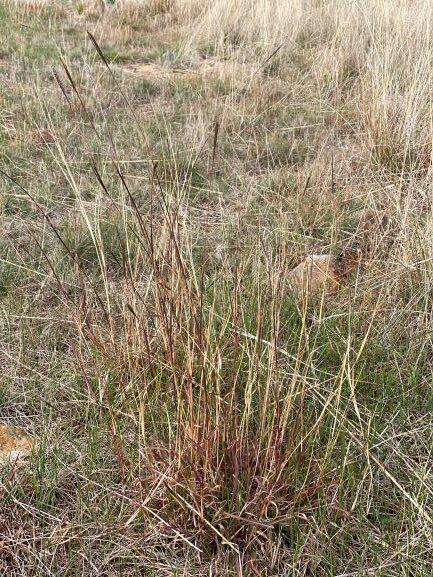
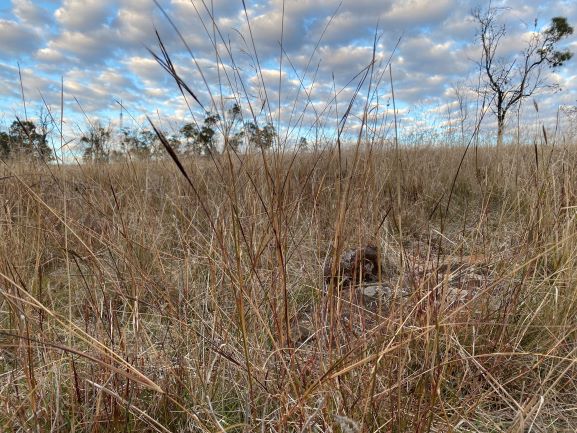
In the paddock, red-leg grass can be used for pasture cropping, in part due to its low foliage growth habit. Winter growing cereal crops can be planted into paddocks of red-leg grass, which is dormant in winter. The crops can be harvested, leaving the red-leg grass to continue growing, and to be used for grazing. Red-leg grass seeds can be sown in spring or early summer, taking some months to establish, as you’d expect from a long-lived plant.
Silky blue-grass, Dichanthium sericeum grows to 60 cm high and has luxurious fluffy blue seed heads that are ripe for picking to spread around when they come off easily as you run your hands over them. Actively growing in warmer weather, seeds can be sown from spring to early autumn. In the paddock it makes a good grazing plant as the dense growing foliage is attractive to stock. In the garden, the blue foliage and compact upright growth habit makes it a good accent plant, contrasting well with the rounded foliage and pink flowers of low-growing correas such as ‘Little Cate’ or ‘Pink Mist’. Plant anytime in clumps of 3 to 5 for best effect.
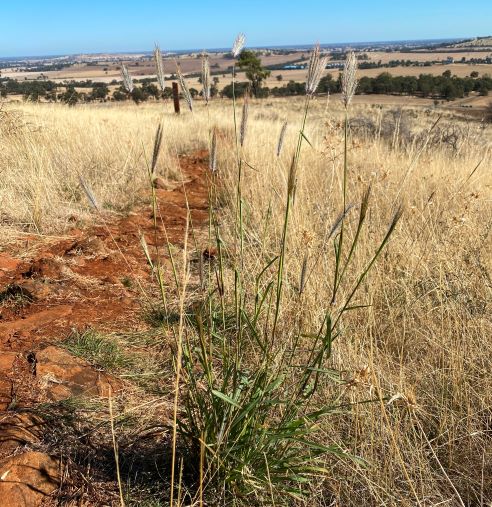
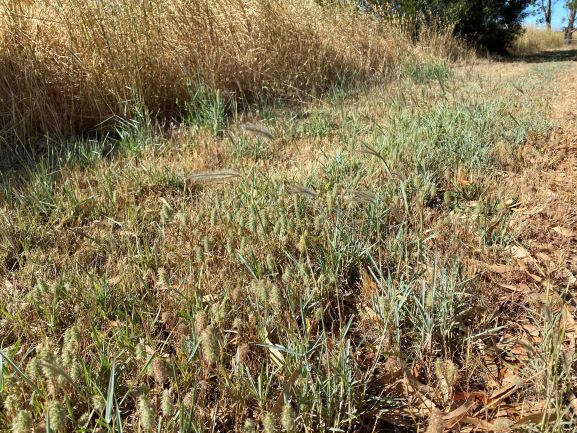
Kangaroo grass, Themeda australis is an iconic Australian grass which flourishes on many local roadsides and reserves, as well as much of eastern Australia. The foliage grows from 30-50 cm high, depending how good the year is, and the flower stems can reach more than a metre high, waving in the wind, earning it the aboriginal name of ‘dancing grass’. Anyone who’s ever examined the tiny seeds inside the flowerheads would wonder as I do how it was harvested by hand by First Nations people, and how they got enough to grind and make into bread. Bruce Pascoe has focused on this grass, growing it, and getting it made into bread, mixed with wheat. As kangaroo grass and many other native grains are naturally gluten free, it seems a natural fit for the many gluten free consumers in the community once the means of production are finessed.
In the garden, plant kangaroo grass in clumps of three or so, in the middle of a garden bed, so the flower heads emerge between the other plants such as grevilleas. The flower heads are a striking rusty red colour, which lasts even after picking and drying. The strong leaves are great for weaving. Kangaroo grass is funnily enough, eaten by kangaroos, and other grazing animals also enjoy it, especially when it is actively growing in summer, although it is best grazed intermittently. I have tried growing this grass from seed in a big patch and can attest that it is slow to establish, as I think it took 3 or 4 years before it flowered for the first time.
Bottlebrush grass or Black-heads, Enneapogon nigricans is a warm season grass. Compact and small, reaching 20-40 cm high, it’s good for planting towards the front of a garden bed. So called because its bushy flowerheads turn from green to a lush black, contrasting richly with the green foliage. In the garden, plant in clumps of 3 or more, pairing it with native daises such as Chrysocephalum apiculatum or Xerochrysum bracteatum or annual native daises such as Rhodanthe species. Harvest Black-heads when the seed heads fade to straw colour and plant seeds in the warmer months. Black- head grass can be used on roadsides to replace other invasive plants, being preferable in terms of fuel load and allowing good visibility.

So, get out and about the local area and check these grasses out. If you don’t have them, they can be seen in action and purchased from the Dookie Artists Tree nursery or your local indigenous plant nursery. Or you could collect some seeds from around your local district and have a go at growing them yourself.


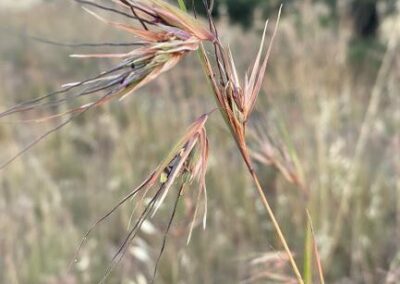
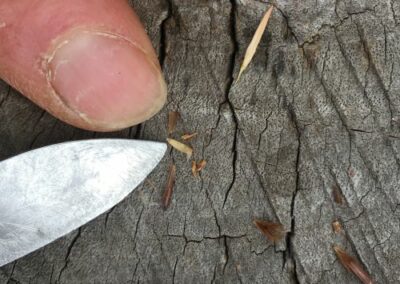
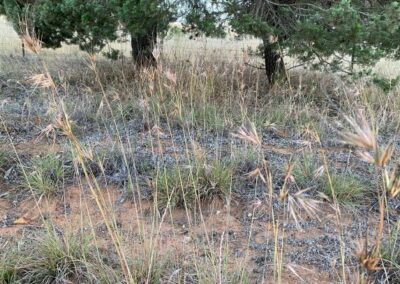
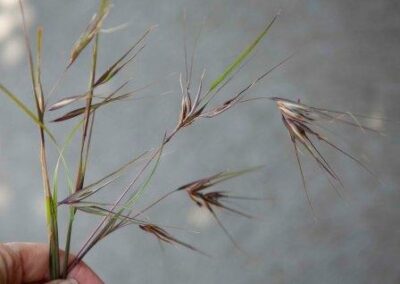
Recent Comments